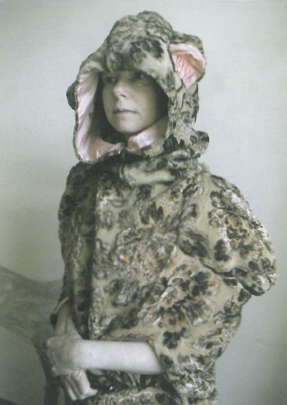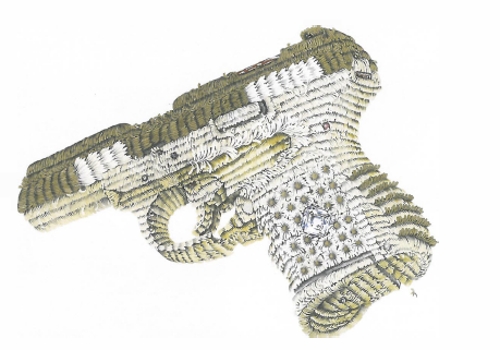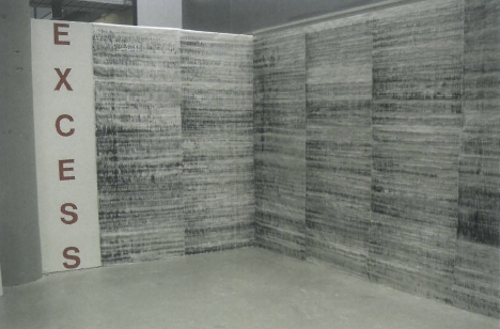
New Zealand has crept up on me as a site of art over many years. A great deal of art made in New Zealand was and is about that place using the several languages of the cultures that inhabit it as well as developing new ones. A lot of it is also about art making and the art world, art myths and art strategies. Contemporary New Zealand art can be savvy and raw, smart and lyrical.
Aotearoa New Zealand is two islands in the South Pacific Ocean, it has a population of 4,1 20,900 and a land area of 268, 021 square kilometres. The main cities Auckland, Wellington, Christchurch and Dunedin are sophisti cated places with marvelous fashion, good coffee and great Japanese food. New Zealand's founding document is the Treaty of Waitangi made in 1840 between the British Crown and the Maori, the tangata whenua or people of the land, the indigenous people of New Zealand who arrived there roughly 1000 years ago. Caucasian New Zealanders are called Pake ha, a term that basically means not Maori and not merely transplanted from another country but belonging to New Zealand. It is their turangawaewae, their place to stand.
New Zealand is officially bicultural, though actually multicultural, Pakeha are in the majority, then Maori (about 16% of the population) and in descending order Chinese, Samoans, Cook Islanders, Indians, Tongans, Niue and Tokelau Islanders. Auckland is the unofficial capital of the Pacific. In New Zealand English and Maori are the official languages. This means not only the frequent use in signage and government documents of two languages it also means the daily side by side existence and experience of different cultural concepts and expectations.
I have wanted to edit an issue of Artlink on New Zealand art for quite a few years, not because I knew any New Zealand artists but because the art that I first saw from there drew my attention through its intense sense of place and atmosphere (Lawrence Aberhardt), its art savvy humour and cleverness (Michael Stevenson and Ronnie van Hout), its absurdity (Gavin Hipkins'
ur-Kiwi), its conflation of intimacy and scale in thinking about cartography (Ruth Watson), its graphic vitality and experimentation with form (Richard Killeen), its thoughtful and seductive post-colonialism (Shane Cotton), its awkward beauty and sense of truth (Colin McCahon).
Through a series of images in catalogues, books and exhibitions I began to get a sense of the culture of another place that may have something in common with my place though at first I was most interested in finding difference. Now I am more interested in finding resonances, communalities and connection. Rather than looking for what is strange I seek to expand my capacity for understanding, to increase what I know, to see how far and where art can take me.
From looking at a few catalogues – Putting the Land on the Map (1989) and Under Capricorn (1996) - both initiated and curated by the remarkable Wystan Curnow it was both historical and psychological correspondences and differences that I looked for and found. The image on the cover of the survey show of New Zealand art Headlands (1992) curated by Bernice Murphy and Robert Leonard – a man standing on his head on a huge electricity pylon – a spirit of play, energy, irreverence – also summed up something enticing about this place and its people.
I'm not interested in comparing Australia and New Zealand but one notable surprise of going there was to find out how little our geographic proximity is part of our perceptions of our respective 'discovery' histories. Captain Cook came to the Pacific looking for an unknown southern land but did not find it goes the story in New Zealand. In Australia we hear that he found it after observing the transit of Venus from Tahiti. Yet after the transit Cook spent six months circumnavigating New Zealand before opening his secret instructions to look for Terra Australis Incognita.
That was more than two hundred years ago yet that history and the very different but related histories of the Indigenous inhabitants of New Zealand and Australia connect us to world history and shift our perceptions of ourselves into global perspectives rather than parochial ones. We do have things in common in spite of all that separates us and as Tina Barton says in her essay in this issue of Artlink - in contemporary art today all over the world location matters less and less yet it remains significant. On the one hand art is becoming more and more a global business like running shoes, airlines or newspapers. At the same time a notion of resistance remains in art as that vital political place where freedom to think, to speak, and to act continues to exist.
It has always seemed to me that the contemporary art of New Zealand is particularly strategic and self-aware, proceeding in a canny way to connect with the rest of the world but this may be an outside reading. Certainly the curatorial activities of Wystan Curnow and more recently Greg Burke and Robert Leonard have escaped the tyranny of isolation in New Zealand culture which was first forged in times of sea travel or expensive air travel. Each of these curators put contemporary New Zealand art together with art from all over the world, to stand alongside other countries rather than in a nation specific show. Yet exhibitions like Cultural Safety (1995) curated by Greg Burke which went to the Frankfurter Kunstverein and Toi Toi Toi (1999) curated by René Block for the Museum Fredericianum in Kassel, took location and geography as meaningful and fertile generators of intellectual property.
My brief visit to New Zealand gave me in part a sense of homecoming which was unexpected. The energetic rough and ready manner of some of the art definitely spoke to me. This magazine includes articles on recent and slightly less recent art histories, artist run initiatives, publications, photography, installations, play, refiguring archives, interviews with curators and pieces on individual artists to give a cumulative sense of a rich and investigative culture. Was it a challenge working, mostly in cyberspace, to commission and collect material for a magazine about the contemporary art of another country? Yes of course. Is there a lot going on in New Zealand contemporary art that is not in these pages? Yes of course. Will we see more of it? Yes of course.












